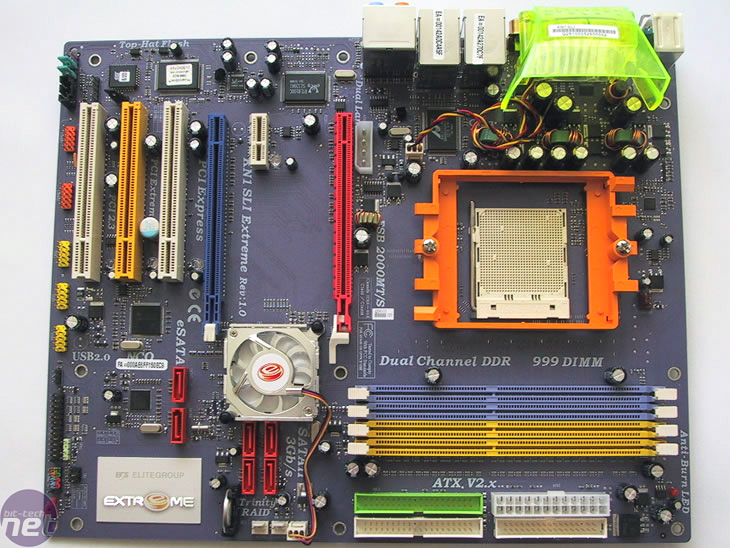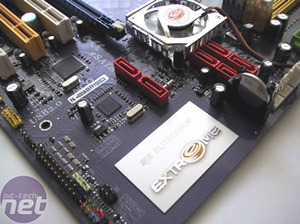
On the subject of the SLI option, you will see that there's no SLI selector card between the PCI-Express x16 slots. This is because ECS don't use one and so both slots are PCI-Express x8 speed, all the time, even when you use just one PCI-Express x16 graphics card. This saves PCB space and the cost of designing extra traces and adding extra components, when arguably you don't get any extra benefit from an x16 slot over an x8 at the moment. This means you won't have to fiddle about in the depths of your case and also risk the possibility of losing a selector card.


ECS again have their PCI Extreme slot, which is a PCI slot with dedicated power traces, providing cleaner power and better signals for PCI cards. It isn't a gimmick and does actually affect more sensitive equipment like Wireless LAN cards, as we found out when we tested a 54g WIFI PCI card with the PF21 Extreme. We found it produced a better signal and thus a better, more reliable connection.
With the NVIDIA NForce 4 MCP not being the coolest chipset on the planet, ECS felt it necessary to actively cool it with a small, low profile 40mm heatsink and fan (which doesn't interfere with either graphics card). ECS also use a 40mm rear exhaust fan covered by translucent green shroud to push hot air from the CPU heatsink out of the case. Unfortunately both these little fans combined add to what can be already three other fans (two graphics and one CPU) making your motherboard really quite noisy.

MSI MPG Velox 100R Chassis Review
October 14 2021 | 15:04






Want to comment? Please log in.